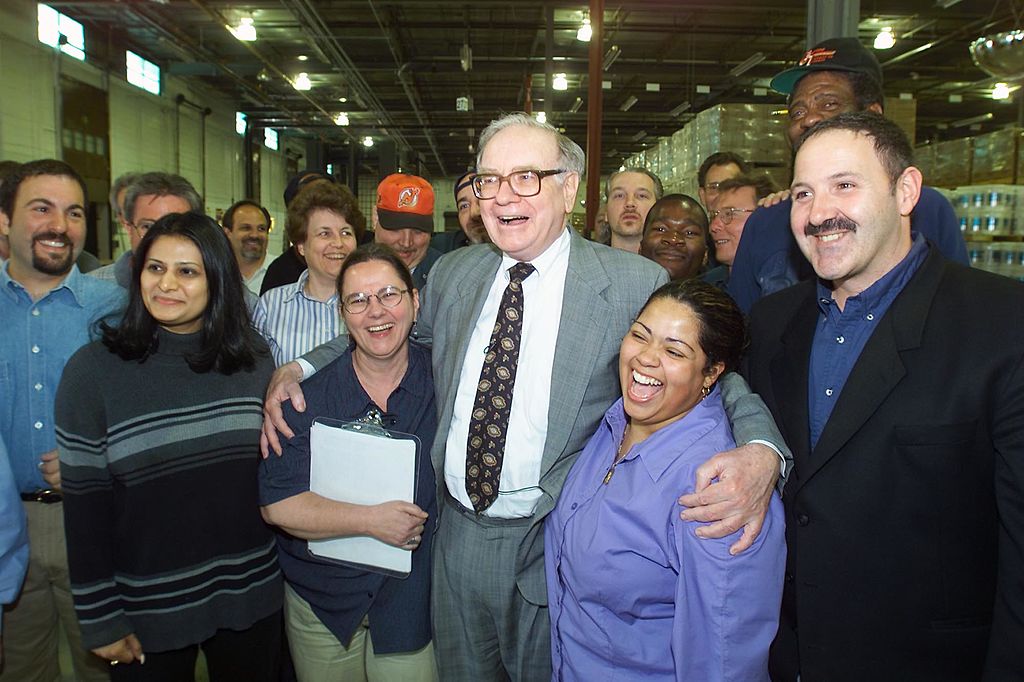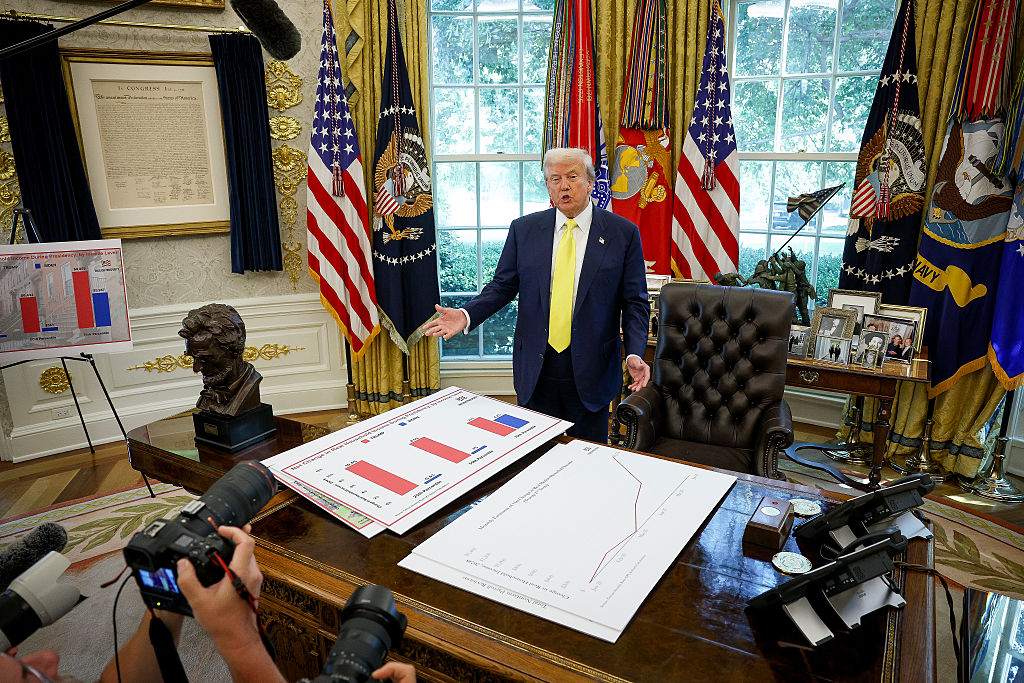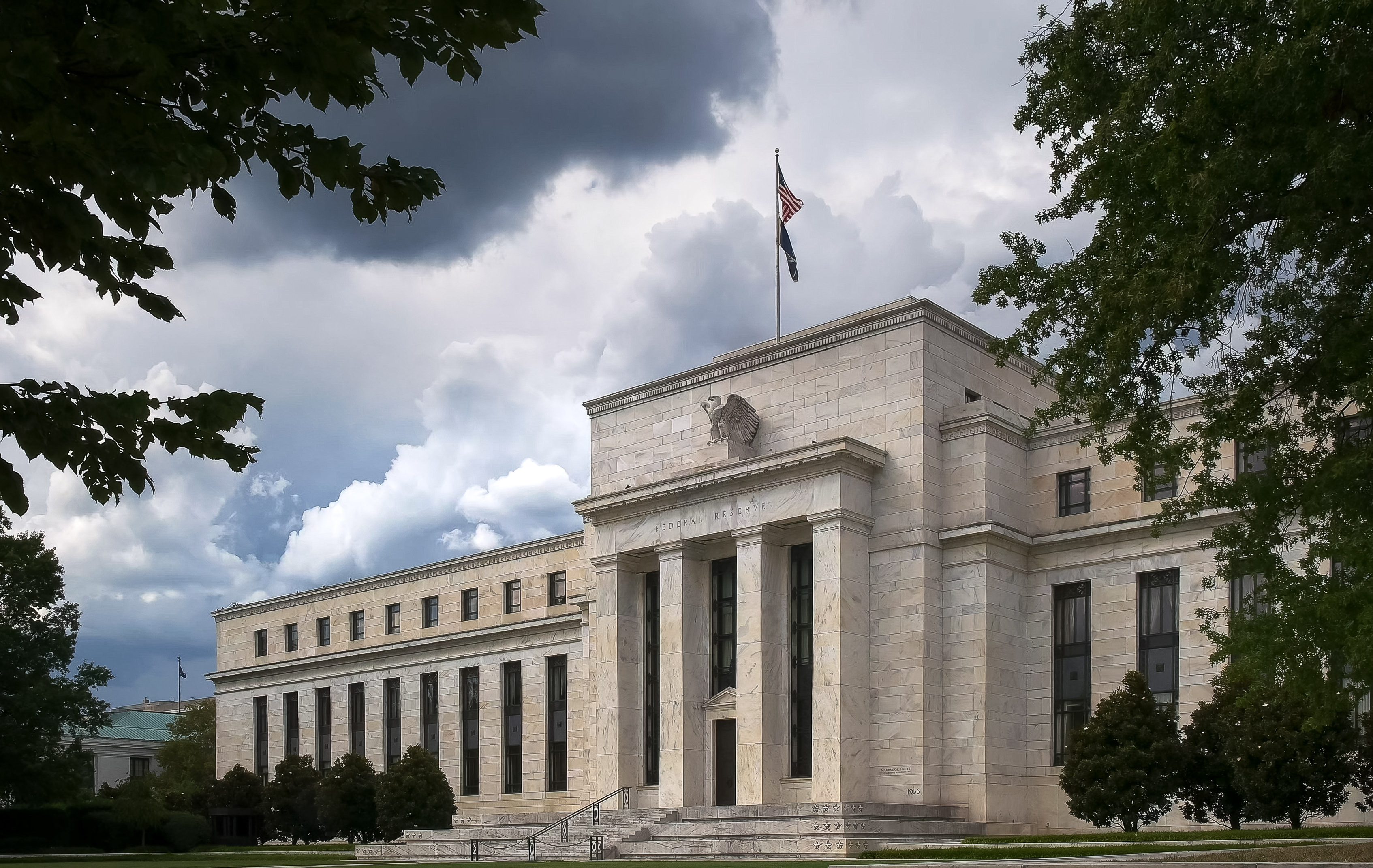Triple Your Money
25 ways to earn 200% over five, eight, ten, 15 or 20 years. It's easier than you think.
The mention of a financial three-bagger may inspire visions of Las Vegas or a bet on a 2-to-1 entry at the Kentucky Derby. But the idea isn't as far-fetched as it sounds. If you're a long-term stock investor willing to let your gains compound year after year, you'll likely triple your money and then some. Assuming annual investment gains of 10.4% -- the average return of U.S. stocks since 1926 -- you'll earn 200% in just 11 years.
Darren Pollack, a 37-year-old chiropractor in New York City, says he has more than tripled his money over the past decade. He's done so with a "semi-aggressive" portfolio that includes a gold fund and a small-company index fund that have each tripled in the past five years, and a real estate index fund that has nearly done so.
Had Pollack poured all his money into those hot investments, he could have tripled his portfolio even faster. But with those fat returns comes above-average risk. Pollack has a wife, Shannon, and a 2-year-old son, Cooper, to think about, so he's not swinging for the fences. Instead, he keeps his portfolio diversified in stock and bond funds that may take much longer to triple. Investing is like exercising, says Pollack: "If you do too much at once, you could hurt yourself."
From just $107.88 $24.99 for Kiplinger Personal Finance
Become a smarter, better informed investor. Subscribe from just $107.88 $24.99, plus get up to 4 Special Issues

Sign up for Kiplinger’s Free Newsletters
Profit and prosper with the best of expert advice on investing, taxes, retirement, personal finance and more - straight to your e-mail.
Profit and prosper with the best of expert advice - straight to your e-mail.
Latest Stock CoverageLatest Fund CoverageSee Our Investing Channel
Aiming to triple your money at too leisurely a pace, on the other hand, brings on risk of a different sort: inflation. You can earn 200% over 20 years in relatively safe bonds. But over long periods, inflation will erode much of that gain. Let's say a $100,000 investment made in 1987 is now worth $300,000. That's just $169,264 in 1987 dollars, after taking inflation into account.We think Pollack has got it about right. There is a place in your portfolio for investments that will triple over various time periods, from short to long. What sorts of investments might go into such a portfolio? Let's take a look....
[page break]
The five-year plan
To triple your money in five years, you must earn an annualized 24.6% return. That's a tall order. Out of 4,817 stock and bond funds in Morningstar's database, just 127 managed to hurdle that bar over the past five years. (All fund-performance data is to March 1.) Virtually all those funds focused either on foreign and emerging-markets stocks or on stocks in a handful of sectors, including energy, precious metals and real estate.
Most of those sectors had been out of favor for years before surging. What are the unloved sectors of today? Health care is certainly one. Standard & Poor's health-care sector has trailed the return of S&P's 500-stock index over the past five years. Investing in Schwab Health Care fund (symbol SWHFX; 800-435-4000) is a bet that the sector will heal itself through consolidation, restructuring and creation of new drugs and medical devices. Using a computer model to pick stocks, the managers of Schwab Health Care keep the portfolio small and nimble (just 48 holdings), and they have avoided getting bogged down in the troubles of big drug makers. The fund gained an annualized 15% over the past three years, outpacing the Dow Jones Health Care index by a whopping ten percentage points a year, on average. This fund could shine if the sector gains momentum.
It's tempting to suggest a technology fund because the sector is a breeding ground of breakthrough companies, such as Google. Most tech indexes, however, are saddled with too many big plodders, such as Dell and Microsoft. But a related area, telecom, could be in the early stages of a renaissance. The industry had a gangbuster 2006, thanks to consolidation and the emergence of innovative wireless technologies. There's no reason that growth can't continue a while longer. One sound choice is T. Rowe Price Media & Telecom (PRMTX; 800-638-5660), which tripled since the start of 2003, mostly under former manager Rob Gensler. Robert Bartolo and Henry Ellenbogen, who took over in 2005, have kept up the pace with a 29% return in 2006. Their portfolio consists of a nice mix of mostly midsize cable, wireless, Internet, networking and advertising companies.
What about precious metals? Gold has already had an impressive run. But Tom Winmill, manager of Midas fund, thinks the popularity of iShares Silver Trust (SLV) could send silver prices soaring. The exchange-traded fund already holds about one-fifth of all silver bullion. If that proportion continues to rise, it could squeeze industrial users of the metal, who would be forced to bid prices up.

You shouldn't imitate Hsia by betting the farm on a single stock or a super-volatile sector, such as metals. But it's okay to consider individual stocks that have the potential to triple as part of a larger portfolio. You'll usually find these stocks either among beaten-down companies poised for a turnaround or among young, small companies ready to blossom.
In the beaten-down category, there's Six Flags (SIX). Washington Redskins owner Daniel Snyder won control of the fading theme-park operator in a proxy battle, threw out management and initiated an extreme makeover. He sold seven of 30 North American parks to pay down debt, and he is refashioning the rest to appeal to families rather than teens. The stock, trading recently at $6, is a long way from its 1999 peak of $40. That captures the attention of George Putnam, editor of The Turnaround Letter, who says Snyder's strategy is beginning to work.
Among up-and-coming companies, SuperGen (SUPG), a biotech firm, looks promising. Dacogen, a drug for treating a bone-marrow disorder, has won approval for sale in the U.S. and could put the company in the black this year. Analyst Elemer Piros, of Rodman & Renshaw, estimates that Dacogen sales could jump from $122 million this year to more than $700 million in 2011. He thinks SuperGen's shares, recently $5, could hit $24 in a year.
[page break]
Wait for eight
Compared with tripling your dough in five years, an eight-year hurdle looks easy. This time frame requires you to compound your money by 14.7% annualized, which you can do by investing with a talented fund manager who looks for small and midsize companies capable of generating growth of that magnitude.
Ron Baron targets a 15% yearly return when he buys stocks. He's easily cleared that bar with Baron Partners (BPTRX; 800-992-2766) and Baron Growth (BGRFX). Growth returned 18% annualized since its inception in early 1995; Partners gained 31% a year since its conversion from a hedge fund to a mutual fund in April 2003.
The key to picking stocks, says Baron, is to look beyond the horizon and "imagine what a business is going to become, not what it is today." Baron says this requires you to "shut out short-term Wall Street noise" and ride your winners. He's struck gold in everything from gambling (Wynn Resorts) to for-profit education (DeVry) and temporary staffing (Robert Half).
Where Are the Customers' Yachts? read the title of a 1940 classic about Wall Street's ability to enrich itself at the expense of its clients. Not much has changed, which is why Fidelity Select Brokerage and Investment Management (FSLBX; 877-208-0098) has consistently tripled shareholders' wealth over eight-year periods. This fund has returned 15% annually since its inception in July 1985 and 17% a year over the past decade. Manager Yolanda Taylor says the major themes guiding her stock picks are globalization of financial markets, huge wealth creation in Asia and pension reform in the U.S. She likes Goldman Sachs and UBS, the Swiss banking giant, for their strong positions in China.
Putting some money with a skilled international-stock manager is another good way to triple your investment. Over the past ten years, Julius Baer International Equity has been the top diversified overseas fund, gaining 17% annualized. The fund is closed to new investors, but you can buy a near-replica in Julius Baer International Equity II (JETAX; 800-387-6977), which, like the original, invests in companies in both developed and emerging nations. New York City-based Rudolph-Riad Younes, who co-manages both funds with Richard Pell, is particularly bullish on Eastern Europe. "It's a long-term growth story that will surprise investors," he says.
Want to try your hand at tripling money over eight years with individual stocks? Charles McQuaid, manager of Columbia Acorn, suggests looking for companies with resilient business models, rising profit margins, an ability to gain market share and strong demand for their products. Oh, yes, the shares must also sell at the right price. Once you've found a winner, he advises holding tight. "With great businesses, if you sell, you end up regretting it most of the time."
McQuaid is still enthusiastic about two top holdings, despite enormous price appreciation over the years: Coach (COH) and Expeditors International of Washington (EXPD). Every time an economist predicts the death of the American consumer, shares of Coach, a luxury-accessories maker, slip. McQuaid then picks up more shares, which recently traded at $49. "If the consumer's dead, she's being buried with a brand-new Coach handbag," he quips. Expeditors, a leading freight forwarder that recently traded at $45, is gaining share in a highly fragmented, globalizing industry (see "The Lure of Rising Dividends," April). Analysts, on average, expect Coach's earnings to grow 20% annually over the next three to five years, and Expeditors' to rise 18% annually.
Alex Motola, manager of Thornburg Core Growth, searches for "businesses that are unassailable." One example, he says, is Las Vegas Sands (LVS). At $87 and trading at 52 times estimated 2007 earnings, Sands may be the rare case of a stock selling at a lofty price-earnings ratio that just may pay off for investors willing to hold it for the long term. Motola says sales and earnings will explode after Sheldon Adelson's gambling powerhouse opens more casinos in Macau and Singapore over the next few years. The Chinese love to gamble, which Adelson proved when he hit the jackpot with his colossal Sands Macau project. Sands is the biggest player in Las Vegas, yet Motola thinks 90% of the company's business could be generated from Asia within a few years.
[page break]
Triple heaven in ten
Since 1926, stocks of large companies have returned 10.4% annualized. Tripling your money in ten years requires you to do just a bit better -- 11.6%. We suggest investing in funds and stocks that should outpace the S&P 500 by at least a couple of points over the next decade.
Chris Davis and Ken Charles Feinberg, co-managers of Selected American Shares (SLASX; 800-243-1575), have a long history of beating the index by more than two percentage points a year. They do this by investing in great companies that trade at reasonable prices and holding on to these compounding machines for ten years or longer. They're fond of "fanatical cultures," such as those found at Costco and Progressive Insurance. Davis loves all manner of financial stocks, including American Express and Wells Fargo, which he calls "growth stocks in disguise."
Fairholme is a totally different beast, but it's also a fine choice for a ten-year triple. The fund (FAIRX; 923-379-6557) returned 17% annualized since its inception in 1999 and actually gained 34% during the 2000Ð02 bear market. Its three managers, Bruce Berkowitz, Larry Pitkowsky and Keith Trauner, hold a concentrated portfolio of undervalued stocks. Trauner says he and his colleagues look for companies that are run by executives who are "good operators and capital allocators, which is not easy to find in the same management of a company." Fairholme has found this rare blend of skills in such executives as Warren Buffett, of Berkshire Hathaway, Charles Ergen, of EchoStar, and Edward Lampert, of Sears Holdings. "We focus as much on the jockey as the horse," says Trauner.
As for individual stocks that can triple in a decade, we suggest focusing on companies with strong competitive positions and histories of increasing their dividends. To get the full benefit of dividends, you should reinvest them for more shares; otherwise, you'll likely spend the payouts or place them in low-yielding investments, impeding your goal of tripling your money.
Brian McMahon, co-manager of Thornburg Investment Income Builder, favors McDonald's (MCD) for the long haul. McDonald's, which raised its payout 50% last year, "started to get religion with dividends only recently," he says. McMahon believes the global fast-food giant is in the early stages of an overhaul that includes selling real estate and sprucing up its menus, which should juice profits. The stock recently fetched $44.
Charles Norton, manager of Vice fund, believes that Altria (MO) is at a similarly early stage of a restructuring that will boost its shares over the long term, not that they've done so badly in the past. Altria, recently trading at $87, has delivered a remarkable annualized total return of 20% over the past 50 years. It spun off Kraft at the end of March and within a year, Norton says, it will probably split into two companies: Philip Morris USA and Philip Morris International. Norton says International has especially healthy growth prospects in China.
John Buckingham, co-manager of the Al Frank fund, believes that you can more than triple your money in Bank of America (BAC) over the next decade. Earnings are growing 10% a year, and the stock, at $51, trades at just ten times estimated 2007 earnings and yields 4.4%. Plus, the company has raised its dividend 29 straight years. Buckingham thinks the stock can return 14% per year.
Finally, consider Aflac (AFL), which generates 70% of its insurance revenues in Japan. Richard Helm, manager of Cohen & Steers Dividend Value, notes that Aflac has boosted its dividend by nearly 30% annually over the past five years, a sure sign of management confidence in the business. In Japan, Aflac benefits from high renewal rates for its supplemental health-insurance policies, creating a recurring stream of revenues that he reckons could help Aflac return 14% a year to its shareholders. The stock traded recently at $46.

HOW LEVERAGE HITS HOME

Hedge funds have long used leverage -- investing borrowed money -- to enhance their returns. Few banks will lend you money to make speculative investments, however. What they will do is lend you money to buy a house. Homeownership is the ordinary investor's way of leveraging a small amount of cash into big investment profits. Here's how it works:
Say you put 20% down, or $90,000, on a $450,000 house. Assume $10,000 in closing costs and your total investment is $100,000. A bank supplies the other $360,000 in the form of a mortgage loan.
Some years later, you find a buyer who is willing to pay $702,000 for your house. Subtract a 6% sales commission ($42,000) and pay off your $360,000 loan (assume for simplicity's sake that you haven't paid down any of the principal). That leaves you with $300,000. You've tripled your money, even though the price of your home rose only 56%. That's the power of leverage.
True, we're not counting other costs, such as mortgage interest, insurance and maintenance. Neither are we weighing benefits, such as the mortgage-interest and property-tax deductions. Rather, we assume your out-of-pocket housing expenses would be the same whether you owned a home or rented one.
Although many housing markets have recently gone through a boom-and-bust period and are still sagging in some areas, home prices typically rise about 5% annually over the long term. In the above scenario, that means you would triple your money in ten years. In the meantime, you've had the chance to live in your "investment."
[page break]
An easy feat for 15
Thanks to the magic of compound interest, tripling your money in 15 years isn't a huge feat. In fact, we could offer a laundry list of investments that should outrun the required annualized return of 7.6%. But with such a long horizon, you don't have to take big risks to achieve your goal. "Sometimes a yawn is a beautiful thing," says Keith Newcomb, a Nashville financial planner.
A terrific, low-risk choice that should triple in 15 years is Merger fund. Merger (MERFX; 800-343-8959) invests in takeover targets after a deal has been announced. The idea is to capture the final few bucks -- or pennies -- of appreciation between the post-announcement price and the price at which the deal is consummated. The unusual strategy yields steady gains with astonishingly low volatility. Over the past 15 years, Merger returned 8% annualized, with about two-thirds less volatility than the S&P 500. And since Merger's launch in 1989, the fund has recorded just one down year -- 2002, when it lost 6% (and the S&P tanked 22%).
If the idea of plowing all of your money into stocks is not your style, then consider a balanced fund, which invests in a mix of stocks and bonds. The math works this way: If the fund puts 65% of assets into stocks and they earn the long-term return of 10.4% annualized, the fund earns 6.7% a year. If the rest of the portfolio is in bonds earning, say, 5.5%, the fund earns an additional 1.9%. Add the numbers and you get 8.6%. Even if expenses are 1%, you net 7.6% a year. Invest in a fund with lower fees or find a manager who beats the benchmarks and you should have no trouble tripling in 15 years.
One fund with that very stock-bond mix and an excellent pedigree is T. Rowe Price Personal Strategy Balanced. An investment-strategy team adjusts the overall asset mix, but the 663 holdings mirror those of other Price funds. For example, Larry Puglia, manager of Blue Chip Growth, selects Balanced's large-company growth stocks. Other Price managers control the fund's large-value, small-company, international and fixed-income portions. The committee often tilts the fund toward out-of-favor areas of the market, and it currently has 30% of the fund's stocks in large, fast-growing companies. The fund (TRPBX; 800-638-5660) returned an annualized 9% over the past decade, beating the S&P 500 by an average of one percentage point per year.
Utilities, once considered stodgy, low-return investments, have been flying high. Over the past three years, the average utility fund gained an annualized 21%. Returns of that magnitude are unsustainable, but utility stocks provide healthy dividends and should produce steady earnings growth over the long term.
Electric utilities, in particular, should benefit from the steady rise in power prices. "If you can invest for an extended period, you want to play the power cycle," says Doug Simmons, manager of Fidelity Select Utilities Growth (FSUTX; 800-544-8544). Over the past decade, the fund, which is a good way to invest in the sector, returned an annualized 10%.
[page break]
Certainty in 20
There are few guarantees in the world of investing. But you have our assurance that if you put $333 in a zero-coupon U.S. Treasury bond now, you will have $1,000 when it matures in February 2030. Okay, we're cheating a bit. For your money to triple in a Treasury zero in 20 years, which requires a 5.6% annualized return, interest rates will have to climb a bit (and the price of zeros maturing in 20 years will have to fall a bit).
Zero-coupon Treasuries, which are backed by the full faith and credit of the U.S. government, sell at a steep discount to their maturity value of $1,000. Unlike conventional bonds, which pay interest semi-annually, zeros pay both interest and principal at maturity. Because you must pay tax on the "phantom" interest each year, these bonds are best held in a retirement account.
With zero-coupon Treasuries, the issue isn't whether you'll reach your goal, but what that $1,000 will be worth when the bond matures. "In a nominal sense, you'll triple your money, but that doesn't mean you'll come anywhere close to tripling your purchasing power," says Tad Rivelle, chief investment officer at Metropolitan West, a money manager that specializes in bonds.
To maximize your "real," or after-inflation, return, consider investing in a fund that tilts toward the most-lucrative corners of the bond market. One such fund is Metropolitan West Total Return Bond (MWTRX; 800-241-4671). A team of four co-managers, including Rivelle, invest in a mixed bag of IOUs, with the holdings and maturity strategy guided by the firm's economic outlook. From its inception in March 1997, the fund gained an annualized 7%, an average of nearly five percentage points a year ahead of consumer inflation. If it can keep whipping inflation, that's one 20-year triple that will be worth crowing about.

A BET ON COLLEGE COSTS

Prepaid-tuition plans, which let you lock in future college costs at today's prices, offer an easy way to effectively triple your money with almost no risk. By design, they are guaranteed to increase in value at the same rate as tuition inflation.
Tuition and fees at public four-year colleges and universities have risen at an average of 7% a year over the past decade, according to the College Board. This means that if you put $1,000 in a prepaid plan today for your newborn, your money would cover $3,380 worth of college costs in 18 years, assuming they continue to rise at a 7% annual rate.
When you invest in a prepaid plan, you usually buy a chunk of in-state tuition, which can range from one semester at a community college to five years at a university. Each state has its own tuition plans and residency requirements. Here's how it works for Virginia residents: Pay $38,580 today for a newborn, and that covers four years' worth of your child's college tuition at any state college or university in Virginia. If you don't have that much money, you can pay over five years, but you'll be charged a premium. Prepaid plans are exempt from federal income tax and are often exempt from state and local taxes.
Now, the bad news. Most state prepaid-tuition plans are restricted to residents, and only 13 states currently offer them. Five other states have frozen or scrapped their prepaid plans entirely because their investment returns weren't keeping up with tuition increases. One alternative is the Independent 529 Plan, which covers 250 private colleges and universities. For more information on states that offer prepaid plans, go to the 529 overview at www.savingforcollege.com.
Profit and prosper with the best of Kiplinger's advice on investing, taxes, retirement, personal finance and much more. Delivered daily. Enter your email in the box and click Sign Me Up.
-
 Gold and Silver Shine as Stocks Chop: Stock Market Today
Gold and Silver Shine as Stocks Chop: Stock Market TodayStocks struggled in Friday's low-volume session, but the losses weren't enough to put the Santa Claus Rally at risk.
-
 Don't Wait Until January: Your Year-End Health Checklist to Kickstart 2026
Don't Wait Until January: Your Year-End Health Checklist to Kickstart 2026Skip the fleeting resolutions and start the new year with a proactive plan to optimize your longevity, cognitive health, and social vitality.
-
 Premium Rewards Cards: More Perks, Higher Fees
Premium Rewards Cards: More Perks, Higher FeesSome issuers are hiking the annual fee on their flagship luxury credit cards by hundreds of dollars. Are they still worth using?
-
 What the Rich Know About Investing That You Don't
What the Rich Know About Investing That You Don'tPeople like Warren Buffett become people like Warren Buffett by following basic rules and being disciplined. Here's how to accumulate real wealth.
-
 How to Invest for Rising Data Integrity Risk
How to Invest for Rising Data Integrity RiskAmid a broad assault on venerable institutions, President Trump has targeted agencies responsible for data critical to markets. How should investors respond?
-
 What Tariffs Mean for Your Sector Exposure
What Tariffs Mean for Your Sector ExposureNew, higher and changing tariffs will ripple through the economy and into share prices for many quarters to come.
-
 How to Invest for Fall Rate Cuts by the Fed
How to Invest for Fall Rate Cuts by the FedThe probability the Fed cuts interest rates by 25 basis points in October is now greater than 90%.
-
 Are Buffett and Berkshire About to Bail on Kraft Heinz Stock?
Are Buffett and Berkshire About to Bail on Kraft Heinz Stock?Warren Buffett and Berkshire Hathaway own a lot of Kraft Heinz stock, so what happens when they decide to sell KHC?
-
 How the Stock Market Performed in the First 6 Months of Trump's Second Term
How the Stock Market Performed in the First 6 Months of Trump's Second TermSix months after President Donald Trump's inauguration, take a look at how the stock market has performed.
-
 Fed Leaves Rates Unchanged: What the Experts Are Saying
Fed Leaves Rates Unchanged: What the Experts Are SayingFederal Reserve As widely expected, the Federal Open Market Committee took a 'wait-and-see' approach toward borrowing costs.
-
 Fed Sees Fewer Rate Cuts in 2025: What the Experts Are Saying
Fed Sees Fewer Rate Cuts in 2025: What the Experts Are SayingFederal Reserve The Federal Reserve cut interest rates as expected, but the future path of borrowing costs became more opaque.